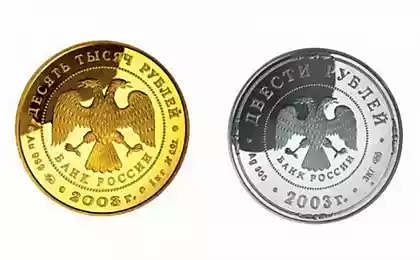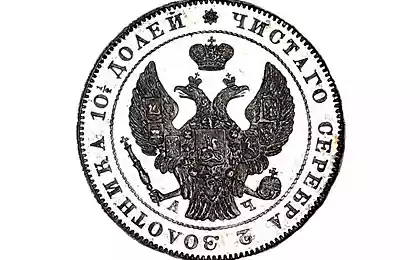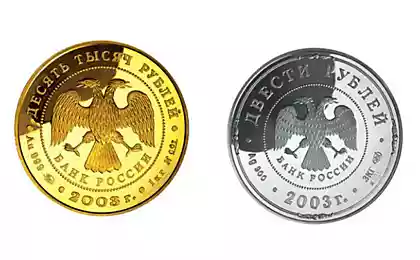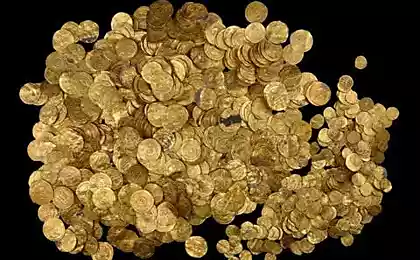497
A stash of Roman and barbaric coins that had lain untouched for more than 2000 years
In treasure, which was found in the East of Britain, was composed of 26 coins, including gold and silver.
During excavations in Dovedale (Derbyshire, UK) archaeologists from the National Fund, the University of Leicester and participants of the project "Operation Nightingale" found the treasure, which contained coins of corieltauvi (early iron age) and Roman times. This is the first case in the UK, when coins of such different backgrounds find together.

The discovery is interesting not only because gold coins of the early iron age are rare, but the fact that it was made in the cave. Cave Reynards kitchen (Reynard's Kitchen Cave) have been used many times in the last 10 thousand years. During excavations in the late 50-ies of XX century there were found stone age tools, animal bones and fragments of pottery.
The first four coins in the cave was found by a local climber who was hiding in it from heavy rain. The mountaineer was a small metal-"pinpointer", with whom he walked across the cave while it was raining. After the discovery of the coins climber turned to local experts and then to the national Fund.
Rachel Hall (Rachael Hall), an archaeologist from the National Fund, said that all they found 26 coins. Three of them – Roman, which pre-dated the invasion of Britain – 43 ad.

The rest of the coins, made of gold and silver, produced corieltauvi (Corieltauvi, Coritani) – people, who in the early iron age and after the romanization lived in the East of Britain: East Midlands, in the area of Lincolnshire, Leicestershire, Nottinghamshire, Derbyshire, Rutland and Northamptonshire. After the Roman conquest the capital of the tribal Union becomes Lester.
Corieltauvi engaged in agriculture. Apparently, they were a Union of several tribes. Corieltauvi in the early iron age is known only from coins, which they began to be minted in the middle of the first century ad. In the early coins no names, but later, similar to those found in the cave Reynards kitchen, show one, two or three names. This confirms the assumption that corieltauvi at the same time there were several rulers.

Coin hoard tells about the wealth of the person who owned it. According to Rachel Hall, the coins from the cave Reynards kitchen was used more as a symbol of power and status, not to buy. Coins of corieltauvi previously found in different places, but never in a cave. This fact raises a number of questions.
"Some people just hid their "best assets" to keep it? Or, perhaps, to speculate on them, in the hope that their value will increase in the future?", – reflects Rachel Hall. The cave could also be a sacred place that no one could enter, and that is why it was abandoned coins.
According to the materials of Heritage Daily
Source: nkj.ru
During excavations in Dovedale (Derbyshire, UK) archaeologists from the National Fund, the University of Leicester and participants of the project "Operation Nightingale" found the treasure, which contained coins of corieltauvi (early iron age) and Roman times. This is the first case in the UK, when coins of such different backgrounds find together.

The discovery is interesting not only because gold coins of the early iron age are rare, but the fact that it was made in the cave. Cave Reynards kitchen (Reynard's Kitchen Cave) have been used many times in the last 10 thousand years. During excavations in the late 50-ies of XX century there were found stone age tools, animal bones and fragments of pottery.
The first four coins in the cave was found by a local climber who was hiding in it from heavy rain. The mountaineer was a small metal-"pinpointer", with whom he walked across the cave while it was raining. After the discovery of the coins climber turned to local experts and then to the national Fund.
Rachel Hall (Rachael Hall), an archaeologist from the National Fund, said that all they found 26 coins. Three of them – Roman, which pre-dated the invasion of Britain – 43 ad.

The rest of the coins, made of gold and silver, produced corieltauvi (Corieltauvi, Coritani) – people, who in the early iron age and after the romanization lived in the East of Britain: East Midlands, in the area of Lincolnshire, Leicestershire, Nottinghamshire, Derbyshire, Rutland and Northamptonshire. After the Roman conquest the capital of the tribal Union becomes Lester.
Corieltauvi engaged in agriculture. Apparently, they were a Union of several tribes. Corieltauvi in the early iron age is known only from coins, which they began to be minted in the middle of the first century ad. In the early coins no names, but later, similar to those found in the cave Reynards kitchen, show one, two or three names. This confirms the assumption that corieltauvi at the same time there were several rulers.

Coin hoard tells about the wealth of the person who owned it. According to Rachel Hall, the coins from the cave Reynards kitchen was used more as a symbol of power and status, not to buy. Coins of corieltauvi previously found in different places, but never in a cave. This fact raises a number of questions.
"Some people just hid their "best assets" to keep it? Or, perhaps, to speculate on them, in the hope that their value will increase in the future?", – reflects Rachel Hall. The cave could also be a sacred place that no one could enter, and that is why it was abandoned coins.
According to the materials of Heritage Daily
Source: nkj.ru























